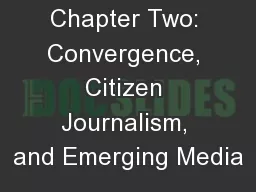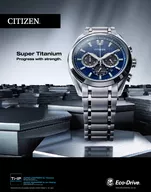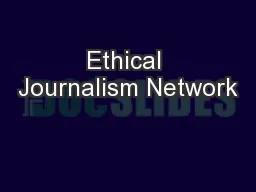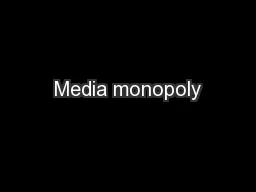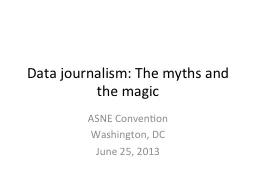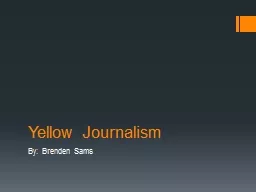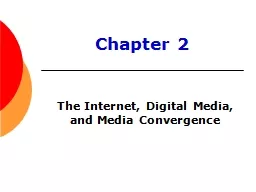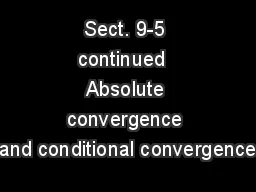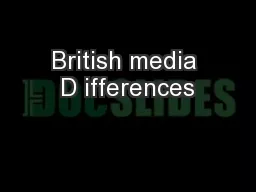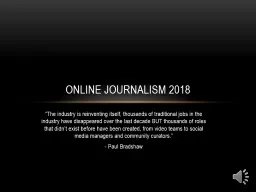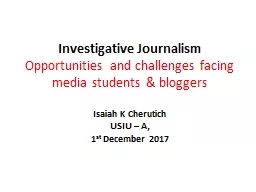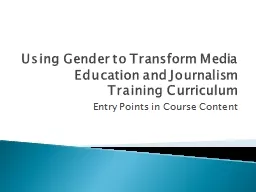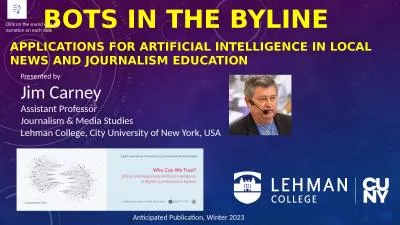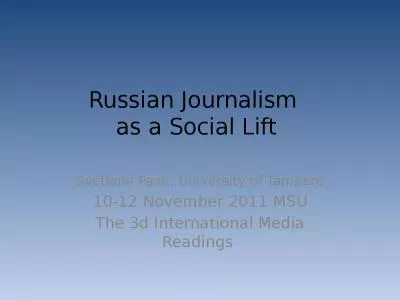PPT-Chapter Two: Convergence, Citizen Journalism, and Emerging Media
Author : tawny-fly | Published Date : 2018-11-14
By Emma Loving Ian Trai l Hannah LaMond Introduction In a dramatic one year period Americans consumption of online news increased by 171 percent local network
Presentation Embed Code
Download Presentation
Download Presentation The PPT/PDF document "Chapter Two: Convergence, Citizen Journa..." is the property of its rightful owner. Permission is granted to download and print the materials on this website for personal, non-commercial use only, and to display it on your personal computer provided you do not modify the materials and that you retain all copyright notices contained in the materials. By downloading content from our website, you accept the terms of this agreement.
Chapter Two: Convergence, Citizen Journalism, and Emerging Media: Transcript
Download Rules Of Document
"Chapter Two: Convergence, Citizen Journalism, and Emerging Media"The content belongs to its owner. You may download and print it for personal use, without modification, and keep all copyright notices. By downloading, you agree to these terms.
Related Documents

